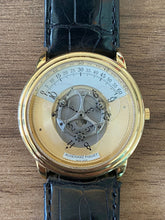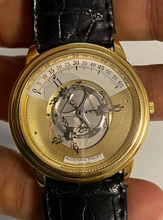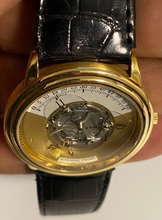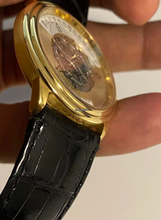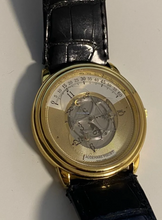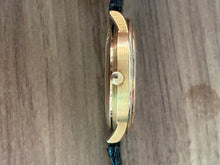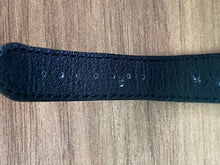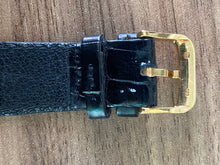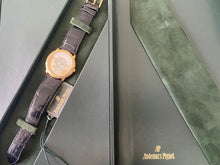
Watch with original box
This yellow gold Audemars Piguet Star Wheel features an unconventional, yet visually appealing, way of displaying the time. Audemars Piguet took inspiration from the wandering hours complication, which dates all the way back to the mid-17th century, and integrated it into a wristwatch for the first time. The revival of this concept has had a strong influence on other watchmakers since, notably on independents producing alternative-time pieces.
The wandering hours complication
It is believed that the wandering hours complication was first used on a night clock designed for Pope Alexander XII in 1656 by the Campani brothers, a well-known family of clockmakers in Rome. The insomniac pope requested the ability to read time in the dark, so an oil lamp was placed inside the clock case, illuminating the dial and allowing him to read the time through the open-worked numerals. The concept was briefly translated to pocket watches but was supplanted by the two-hand method of displaying the time.
In August 1989, Audemars Piguet watchmakers came across an article in an old Swiss watchmaking journal featuring an atypical clock, which indicated the time by means of three visible discs, themselves revolving around another disk. Audemars Piguet used this wandering hours clock as the inspiration for the Star Wheel. A year and a half of research went into the finished prototype, with the manufacture registering its own patent in the process. The Star Wheel was subsequently released in 1991.
An unconventional design
The Star Wheel displays time via three sapphire disks with printed hours, which rotate on a centre wheel, where the hour and minute hands are usually attached. The name of the watch is derived from the star-shaped wheels which connect the sapphire disks to this rotating centre ring. The hours on the disks point to the minutes on a 120-degree sector, gliding over them over the course of an hour. The rotating ring turns 360 degrees, one full turn, in 3 hours. Whilst not quite a jump-hour watch, a satisfying mechanical feature of the Star Wheel is the moment the sapphire disks jump into position, right before sliding over the minutes track.
The dial layout of the Star Wheel is aesthetically satisfying in its richness, with ample details to get lost in. The contrast between the traditional guilloché on the lower portion of the dial, the smooth finish of the minute indicator and the exposed mechanics in the centre - which are beautifully hand-finished with angling and polishing - offers a rich interplay of textures. Meanwhile, the numerals on the sapphire disks, which are executed in a playful font, seem to gracefully float above the rest of the dial.
The yellow gold case features a stepped bezel and short, down-turned lugs, which work proportionately well together. At 36mm in diameter, and with a remarkably thin profile, the Star Wheel sits comfortably on the wrist. The stepped bezel lends a classic aesthetic to an otherwise distinctive and unusual dial layout.
The movement
This Audemars Piguet 25720BA Star Wheel is powered by the self-winding calibre 2224, based on a Jaeger LeCoultre ébauche, having been modified to integrate the wandering hours function. It features 33 working jewels, has been adjusted to five positions, and also integrates an oscillating weight mounted on an unlubricated ceramic ball bearing, with one segment of the weight made out of 21-carat gold.












